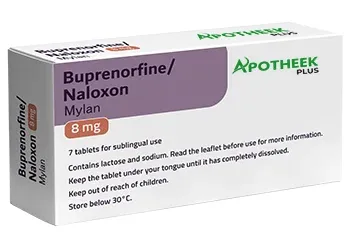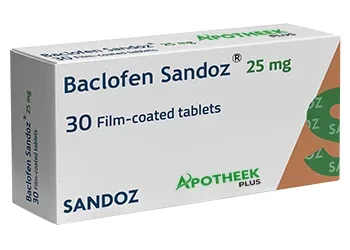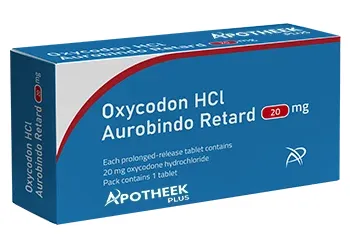What are you looking for?
Search
Welcome to Apotheek Plus France!

Top 10 Painkillers in France 2025: Prescription and Non-Prescription

Pain relief: One of the four pillars of care in France—In all states, from a little headache to chronic pain: a cross-sectional national survey.
OTC (over-the-counter) and prescription painkillers are frequently used, but which ones are the most safe and effective is key.
Allergic drugs in France had, until 2025, managed to reach an exquisite compromise between supply and control, while maintaining the lists of opioid substances among its favorite pastimes.
This guide reviews the 10 most commonly used analgesics in France, their uses and safety profiles, as well as current drug regulations and some of the questions patients most frequently ask.
Painkiller Classification Table
|
Painkiller |
Type |
Common Uses |
Prescription Required? |
Notes |
|
Paracetamol |
OTC |
Mild-moderate pain, fever |
No |
Liver risk in overdose |
|
Ibuprofen |
OTC |
Muscle aches, cramps |
No |
NSAID, stomach/kidney risk |
|
Aspirin |
OTC/Prescription |
Headache, cardiovascular protection |
Only high dose or cardiovascular |
Risk of Reye’s in children |
|
Ketoprofen |
Prescription |
Arthritis, inflammation |
Yes |
Monitor GI & heart risks |
|
Diclofenac |
Prescription |
Back pain, arthritis |
Yes |
Oral form: cardiovascular risk |
|
Tramadol |
Prescription |
Moderate-severe pain |
Yes |
Weak opioid, dependence risk |
|
Codeine |
Prescription |
Headaches, post-op pain |
Yes |
Addictive |
|
Morphine |
Controlled |
Severe chronic/cancer pain |
Yes |
High dependence risk |
|
Naproxen |
Prescription |
Arthritis, menstrual pain |
Yes |
GI precautions |
|
Fentanyl Patch |
Controlled |
Chronic severe pain |
Yes |
Highly potent, opioid-tolerant patients only |
Paracetamol
-
Type: Over-the-Counter
-
Indications: Mild to moderate pain, Fever
-
Notes: Paracetamol is the leading painkiller in France. It’s safe when used as directed, but it can lead to serious liver damage if taken in excess.
Ibuprofen
-
Type: Over-the-Counter
-
Uses: Muscle aches, swelling, menstrual cramps
-
Note: Ibuprofen is a NSAID. Although effective, long-term use can cause stomach irritation, kidney issues, and heart problems.
Aspirin (Aspégic, Kardégic)
-
Type: OTC for pain, prescription for certain conditions
-
Uses: Headache, fever, cardiovascular protection
-
Notes: Aspirin can help with pain as well as heart health, but should not be given to children because of the risk of Reye’s syndrome.
Ketoprofen
-
Type: Prescription
-
Indications: Joint pain, arthritis, and Inflammatory conditions
-
Note: Potent NSAID—needs monitoring for GI and cardiovascular side effects.
Diclofenac (Voltarene)
-
Type: Prescription
-
Uses: Arthritis, back pain, musculoskeletal pain
-
Notes: Available in oral and topical forms. Oral diclofenac can increase cardiovascular risks and should be used cautiously.
Tramadol
-
Type: Prescription Only
-
Uses: Moderate to severe pain not relieved by NSAIDs or paracetamol
-
Notes: Tramadol 50 mg is a weak opioid. France has tightened its prescription rules to reduce misuse and dependence.
Codeine
-
Type: Prescription Only
-
Uses: Severe headaches, dental pain, post-operative pain
Notes: Codeine 20 mg can be addictive and should only be taken under supervision.
Morphine
-
Type: Prescription Only (controlled)
-
Uses: Severe chronic pain, cancer pain, palliative care
-
Notes: Morphine is highly potent and strictly regulated due to its risk of dependence.
Naproxen (Apranax, Naprosyne)
-
Type: Prescription
-
Uses: Arthritis, musculoskeletal disorders, menstrual pain
Notes: Long-acting NSAID; gastrointestinal precautions are necessary.
Fentanyl Patch 100 mcg/hour
-
Type: Prescription Only (controlled)
-
Uses: Severe chronic pain, especially in opioid-tolerant patients
-
Notes: Fentanyl patches provide continuous pain relief over 72 hours. They are highly potent and should only be used in patients already tolerant to opioids. Misuse can be life-threatening.
Mechanism of Action Overview
-
Paracetamol: Works centrally in the brain to reduce pain perception; minimal anti-inflammatory effect.
-
NSAIDs (Ibuprofen, Ketoprofen, Diclofenac, Naproxen): Reduce inflammation by blocking prostaglandin production.
-
Opioids (Tramadol, Codeine, Morphine, Fentanyl): Bind to opioid receptors in the brain and spinal cord, altering pain perception.
-
Aspirin: Anti-inflammatory, pain relief, and platelet inhibition for cardiovascular protection.
Side Effects Overview
|
Painkiller |
Common Side Effects |
Serious Risks |
|
Paracetamol |
Nausea |
Liver failure in overdose |
|
Ibuprofen |
Stomach upset |
Kidney damage, heart issues |
|
Aspirin |
Upset stomach |
Reye’s syndrome in children, bleeding |
|
Ketoprofen |
GI discomfort |
Heart, kidney risk |
|
Diclofenac |
GI discomfort |
Heart attack/stroke risk |
|
Tramadol |
Drowsiness, constipation |
Dependence, seizures |
|
Codeine |
Constipation, drowsiness |
Addiction, respiratory depression |
|
Morphine |
Drowsiness, nausea |
Addiction, respiratory depression |
|
Naproxen |
GI upset |
Stomach bleeding, kidney damage |
|
Fentanyl Patch |
Dizziness, nausea |
Respiratory depression, accidental overdose |
Painkiller Safety During Pregnancy & Lactation
-
Safe: Paracetamol (most widely used).
-
Caution/Prescription only: NSAIDs (avoid especially in third trimester), opioids (short-term use only under doctor supervision).
-
Unsafe: Aspirin high doses, potent opioids without supervision.
Painkiller Alternatives & Non-Pharmacological Options
-
Topical analgesics: Creams, gels (diclofenac, ibuprofen gel).
-
Physical therapy: Exercise, stretching, massage.
-
Heat/cold therapy: Muscle pain relief.
-
Combination: Acetaminophen + non-drug approaches effective for mild pain without risking liver damage from high doses.
Navigating Painkiller Regulations in France
Recent changes in France’s regulations aim to improve safety and reduce abuse:
-
Tramadol, codeine, and dihydrocodeine now require secure prescriptions with limited duration.
-
OTC cold and flu medications containing pseudoephedrine now require prescriptions.
-
The ANSM closely monitors misuse and encourages safe self-medication.
Final Thoughts
In 2025, France regulations towards painkillers and safety considerations. Paracetamol remains the foundation for most mild-to-moderate pain, while opioids such as tramadol, morphine, and fentanyl are strictly controlled. Patients should always follow medical guidance, avoid self-medicating with potent opioids, and purchase medicines only from licensed pharmacies. For convenience and safety, many now choose to buy painkillers online through authorized, secure pharmacies, ensuring access to genuine, regulated products.
Frequently Asked Questions (FAQs)
Can I buy pain relief over the counter in France?
Yes. OTC agents are paracetamol, aspirin, and low-dose ibuprofen. For the bigger-hitter opioids such as codeine, tramadol, morphine, and fentanyl, you need a prescription.
What is the most used painkiller in France?
The most prescribed and used drug is paracetamol (Doliprane).
Can I buy painkillers online?
Yes, through licensed online pharmacies. A prescription is a requisite for drugs, which can only be supplied via prescription.
What are the risks of long-term use of OTC pain relievers?
Yes. Long-term use of NSAIDs can cause stomach, kidney, or heart problems. Paracetamol overdose can damage the liver.
What painkillers are you allowed when pregnant?
Paracetamol is generally considered safe. NSAIDs and opioid medications are to be used under the direction of a physician.
How to Use Fentanyl Patches Safely
Fentanyl patches. If you’re not opioid-tolerant, don’t take fentanyl patches. Apply as directed on the patch, rotate locations every time, and don't cut the patch. Accidental exposure can be fatal.
So what are the latest prescribing guidelines for tramadol and codeine?
All of that has resulted in safe prescribing, limits on quantities, and maximum boxes allowed, to curb misuse.
Are NSAIDs safe for everyone?
Not always. And high-risk groups would be older people, those with kidney or heart disease, and those who use other medications. Always follow the recommended dosage.
I suspect you’re dependent on a painkiller: What should I do?
Consult a doctor immediately. Gradually reducing under supervision is safer than sudden cessation.
Is it safe for young children and older adults to take strong painkillers?
Children require weight-appropriate dosing, and elderly patients are at higher risk for side effects. Always consult a healthcare professional.








